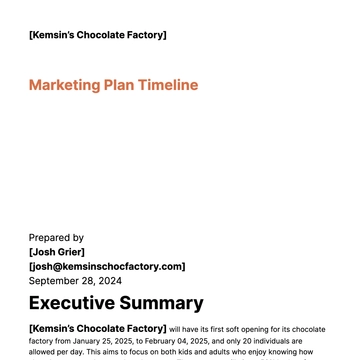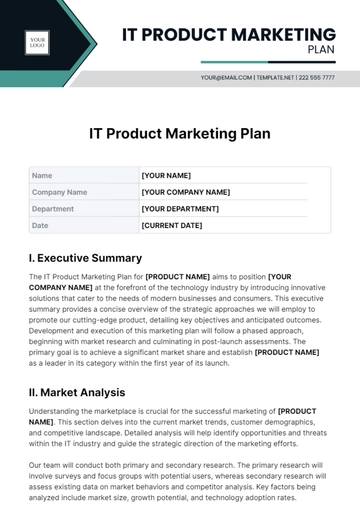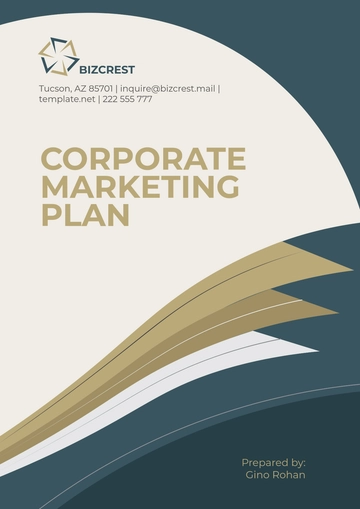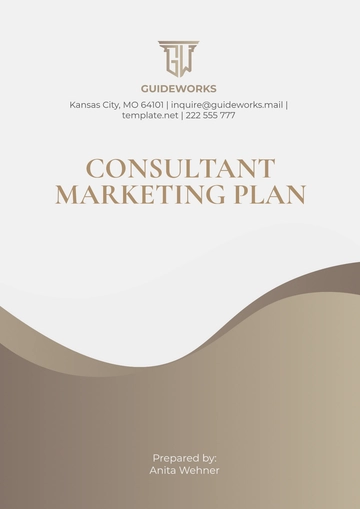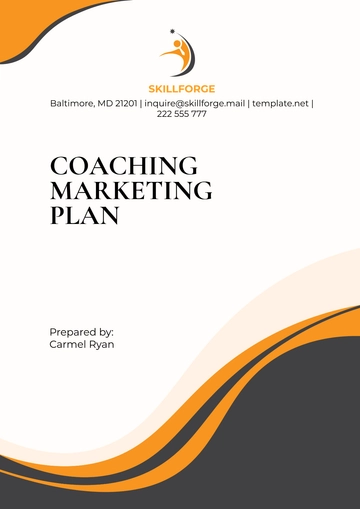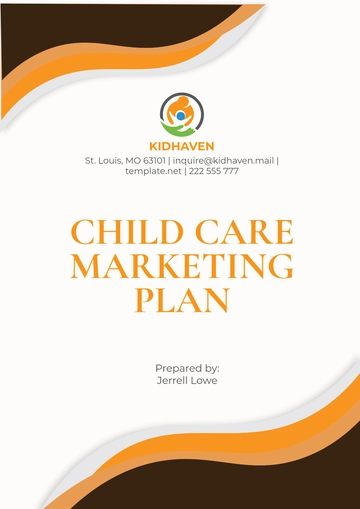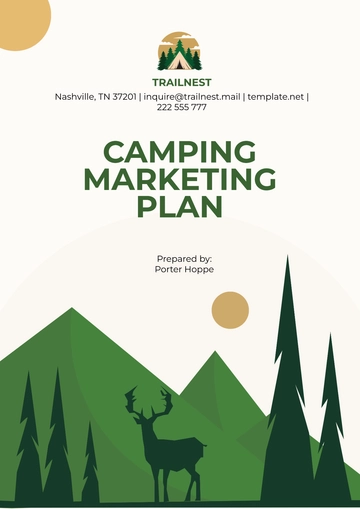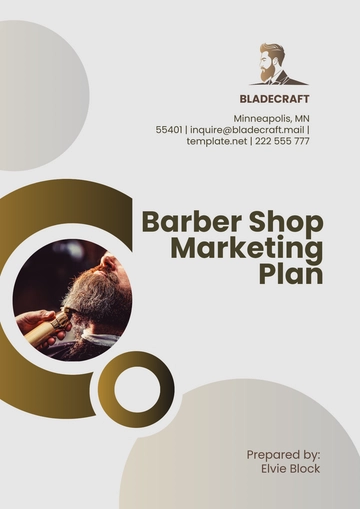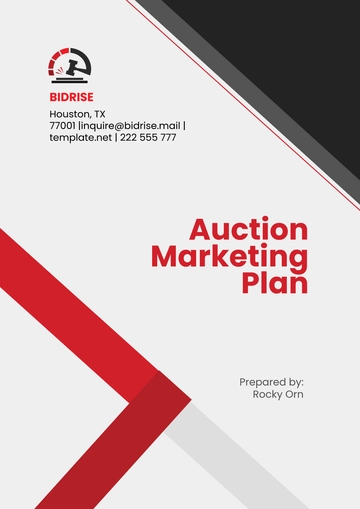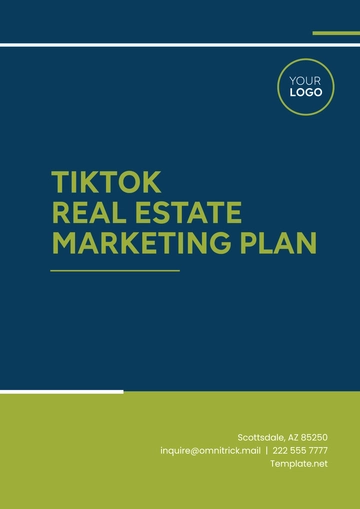Free Car Wash Marketing Plan
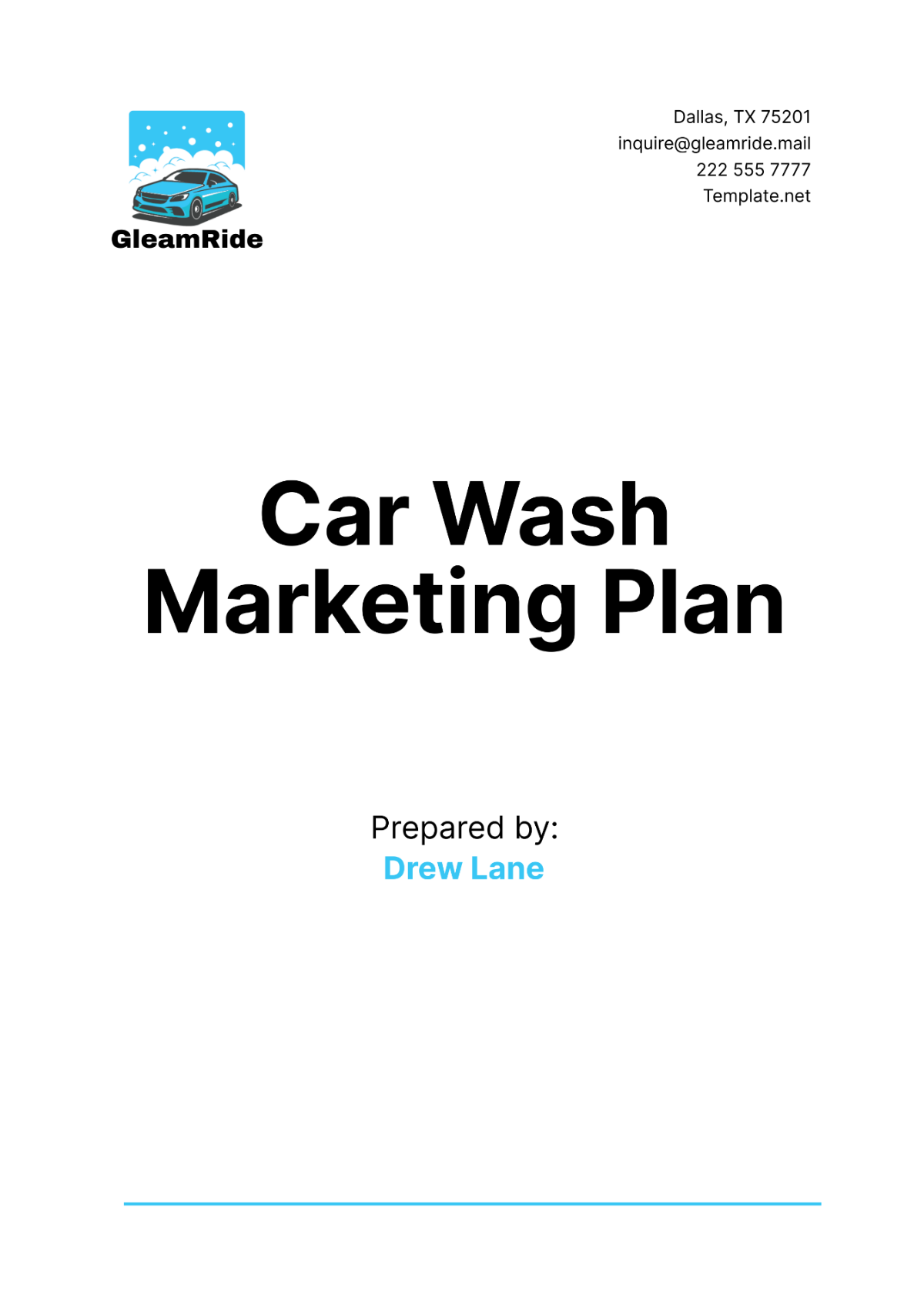
I. Executive Summary
This Car Wash Marketing Plan for [Your Company Name] outlines a comprehensive strategy to increase market share, enhance brand recognition, and boost revenue for the year 2051. Our objectives focus on expanding our customer base, improving customer retention, and optimizing our service offerings. This plan includes detailed initiatives, timelines, budget allocations, and Key Performance Indicators (KPIs) to measure success.
For the year 2051, we aim to achieve a 20% increase in new customer acquisition and a 15% improvement in customer retention rates. The total budget allocated for our marketing initiatives is $200,000, which will be distributed across various channels, including digital marketing, traditional advertising, and promotional events. By implementing targeted marketing strategies, we anticipate a 25% growth in overall revenue.
Our key strategies include leveraging social media platforms, enhancing our online presence through Search Engine Optimization (SEO), launching seasonal promotions, and forming strategic partnerships with local businesses. This plan provides the details of our marketing plan, including market analysis, target audience, marketing strategies, budget allocation, and performance metrics.
II. Market Analysis
A. Industry Overview
Market Size: The car wash industry in the United States is valued at approximately $15,000,000, with an expected annual growth rate of 3%. The increasing demand for vehicle maintenance and convenience drives this growth.
Trends: Key trends include the rise of eco-friendly car wash solutions, the adoption of mobile car wash services, and the integration of advanced technology such as automated systems and online booking platforms.
Competitive Landscape: The industry is highly competitive, with numerous small and large players. Differentiation through quality service, customer experience, and innovative offerings is crucial for success.
Opportunities: Opportunities exist in expanding service offerings, targeting eco-conscious consumers, and leveraging technology to enhance customer convenience and satisfaction.
B. Target Market
Demographics: Our primary target market includes vehicle owners aged 25-55, with a focus on middle to upper-income households. This demographic values convenience, quality, and eco-friendly services.
Psychographics: Target customers are busy professionals and families who seek reliable and efficient car wash services. They are willing to pay a premium for quality and convenience.
Geographics: Our service area primarily covers urban and suburban regions within a 20-mile radius of our car wash locations. These areas have a high concentration of potential customers.
Behavioral Segments: Key segments include regular car wash users, customers seeking detailing services, and those interested in eco-friendly options. Understanding their preferences helps in tailoring our marketing strategies.
C. SWOT Analysis
Strengths
High-quality service with a focus on customer satisfaction.
Strong brand reputation and loyal customer base.
Advanced technology and eco-friendly solutions.
Strategic location in high-traffic areas.
Weaknesses
Limited geographic presence.
High operational costs.
Dependence on weather conditions.
Opportunities
Expansion to new locations.
Partnership with local businesses.
Introduction of loyalty programs and subscription services.
Adoption of new technologies.
Threats
Intense competition from established and new players.
Economic downturns affecting discretionary spending.
Regulatory changes impacting operations.
III. Marketing Strategies
A. Digital Marketing
Social Media Marketing: Utilize platforms such as Facebook, Instagram, and Twitter to engage with customers, promote services, and run targeted ad campaigns. Aim to increase social media followers by 30% and achieve a 10% engagement rate.
Search Engine Optimization (SEO): Improve website visibility on search engines through keyword optimization, content creation, and backlink building. Target to achieve a top 3 ranking for key search terms and increase organic traffic by 40%.
Email Marketing: Implement email campaigns to promote special offers, seasonal discounts, and loyalty programs. Aim to achieve an open rate of 25% and a click-through rate of 5%.
Online Reviews and Reputation Management: Encourage satisfied customers to leave positive reviews on platforms like Google and Yelp. Maintain an average rating of 4.5 stars or higher.
B. Traditional Advertising
Local Newspapers and Magazines: Place advertisements in local publications to reach a wider audience. Aim for a reach of 50,000 readers per month.
Radio and TV Commercials: Run commercials on local radio and TV stations to increase brand awareness. Target a reach of 100,000 listeners/viewers per month.
Billboards and Banners: Utilize outdoor advertising in strategic locations to attract passing traffic. Aim for a visibility of 200,000 impressions per month.
Direct Mail Campaigns: Send promotional materials to households within our service area. Target a 5% response rate from direct mail campaigns.
C. Promotions and Events
Seasonal Promotions: Launch promotions during peak seasons such as summer and holidays to attract more customers. Offer discounts and special packages to boost sales.
Customer Loyalty Programs: Introduce a loyalty program to reward repeat customers with discounts and exclusive offers. Aim to increase customer retention by 15%.
Community Events and Sponsorships: Participate in local events and sponsor community activities to enhance brand visibility and goodwill. Aim to participate in at least 5 events annually.
Referral Programs: Encourage existing customers to refer friends and family by offering incentives. Target to acquire 10% of new customers through referrals.
D. Strategic Partnerships
Local Businesses: Form partnerships with local businesses such as auto dealerships, service centers, and gas stations to offer bundled services and cross-promotions.
Corporate Accounts: Target corporate clients with fleets of vehicles to offer discounted car wash services. Aim to secure at least 10 corporate accounts.
Charity Partnerships: Collaborate with local charities for fundraising events, donating a portion of proceeds. Enhance brand image and community involvement.
Environmental Initiatives: Partner with environmental organizations to promote eco-friendly practices. Enhance brand reputation as a socially responsible business.
IV. Budget Allocation
The following table outlines the budget allocation for various marketing initiatives for the year 2051:
No. | Marketing Initiative | Budget |
|---|---|---|
1 | Social Media Marketing | $40,000 |
2 | Search Engine Optimization | $30,000 |
3 | Email Marketing | $10,000 |
4 | Online Reviews Management | $5,000 |
5 | Local Newspapers and Magazines | $20,000 |
6 | Radio and TV Commercials | $30,000 |
7 | Billboards and Banners | $25,000 |
8 | Direct Mail Campaigns | $10,000 |
9 | Seasonal Promotions | $10,000 |
10 | Customer Loyalty Programs | $5,000 |
11 | Community Events and Sponsorships | $10,000 |
12 | Referral Programs | $5,000 |
13 | Strategic Partnerships | $0 (collaborative) |
Total | $200,000 |
A. Digital Marketing
Social Media Marketing: Allocating $40,000 to social media marketing will cover ad campaigns, content creation, and influencer collaborations. This investment aims to increase brand awareness and engagement.
SEO: A budget of $30,000 will be allocated to SEO efforts, including keyword research, content development, and technical optimization. This will help improve our search engine rankings and drive organic traffic.
Email Marketing: With $10,000 allocated, we will develop and execute targeted email campaigns to promote offers and engage with customers. This will help in retaining existing customers and attracting new ones.
B. Traditional Advertising
Local Newspapers and Magazines: Allocating $20,000 to advertisements in local publications will help us reach a wider audience and build brand recognition.
Radio and TV Commercials: A budget of $30,000 will cover the cost of producing and airing commercials on local radio and TV stations. This will help in reaching a broad audience and enhancing our brand image.
Billboards and Banners: With $25,000 allocated to outdoor advertising, we will place billboards and banners in high-traffic areas to attract potential customers.
C. Promotions and Community Engagement
Seasonal Promotions: Allocating $10,000 towards seasonal promotions will enable us to create special offers and discounts during key seasons and holidays. These promotions are designed to attract customers during peak times and increase sales.
Customer Loyalty Programs: With a budget of $5,000 dedicated to customer loyalty programs, we will develop incentives such as loyalty cards or points systems. This initiative aims to enhance customer retention by rewarding repeat business and fostering long-term relationships.
Community Events and Sponsorships: Allocating $10,000 towards community events and sponsorships will allow us to participate in local festivals, sports events, or charity drives. By engaging with the community, we aim to enhance brand visibility and build a positive reputation among local residents.
D. Referral Programs and Strategic Partnerships
Referral Programs: A budget of $5,000 will be allocated to referral programs where existing customers are incentivized to refer new customers. This initiative leverages word-of-mouth marketing and encourages satisfied customers to promote our services to their network.
Strategic Partnerships: While no direct financial allocation is required for strategic partnerships, collaborative efforts with local businesses or organizations will be pursued. These partnerships aim to mutually benefit both parties through joint marketing initiatives or shared customer bases.
V. Timeline
The following table outlines the timeline for implementing the marketing initiatives for the year 2051:
No. | Marketing Initiative | Start Date | End Date |
|---|---|---|---|
1 | Social Media Marketing | Jan 2051 | Dec 2051 |
2 | SEO | Jan 2051 | Dec 2051 |
3 | Email Marketing | Feb 2051 | Dec 2051 |
4 | Online Reviews Management | Jan 2051 | Dec 2051 |
5 | Local Newspapers and Magazines | Mar 2051 | Nov 2051 |
6 | Radio and TV Commercials | Apr 2051 | Sep 2051 |
7 | Billboards and Banners | May 2051 | Nov 2051 |
8 | Direct Mail Campaigns | Jun 2051 | Dec 2051 |
9 | Seasonal Promotions | Jun 2051 | Dec 2051 |
10 | Customer Loyalty Programs | Feb 2051 | Dec 2051 |
11 | Community Events and Sponsorships | Mar 2051 | Nov 2051 |
12 | Referral Programs | Jan 2051 | Dec 2051 |
13 | Strategic Partnerships | Jan 2051 | Dec 2051 |
A. Q1 (Jan - Mar)
Social Media Marketing: Launch initial campaigns and build content strategy. Aim to increase followers and engagement from the start.
SEO: Begin keyword research and on-page optimization. Focus on improving search rankings early on.
Email Marketing: Develop email templates and initiate the first round of campaigns targeting new and existing customers.
Online Reviews Management: Encourage customers to leave reviews and start managing our online reputation.
B. Q2 (Apr - Jun)
Radio and TV Commercials: Produce and air commercials to boost brand visibility. Track reach and engagement metrics.
Billboards and Banners: Place outdoor advertisements in strategic locations. Monitor visibility and response rates.
Direct Mail Campaigns: Start sending promotional materials to targeted households. Measure response and conversion rates.
Seasonal Promotions: Launch summer promotions and special offers. Aim to attract more customers during peak season.
C. Q3 (Jul - Sep)
Customer Loyalty Programs: Roll out loyalty program and promote to existing customers. Track participation and retention rates.
Community Events and Sponsorships: Participate in local events and sponsor activities. Enhance community presence and goodwill.
Referral Programs: Implement referral programs and encourage word-of-mouth marketing. Track new customer acquisition through referrals.
D. Q4 (Oct - Dec)
SEO: Continue optimizing content and building backlinks. Aim for top search rankings by year-end.
Email Marketing: Execute holiday season email campaigns to boost sales. Track open and click-through rates.
Online Reviews Management: Maintain a strong online reputation by encouraging positive reviews and addressing feedback.
Strategic Partnerships: Strengthen collaborations with local businesses and corporate clients. Evaluate partnership performance and impact.
VI. Key Performance Indicators (KPIs)
The following table outlines the key performance indicators (KPIs) to measure the success of our marketing initiatives:
No. | KPI | Target Value |
|---|---|---|
1 | New Customer Acquisition | 20% increase |
2 | Customer Retention Rate | 15% improvement |
3 | Social Media Followers | 30% increase |
4 | Social Media Engagement Rate | 10% engagement rate |
5 | Organic Traffic | 40% increase |
6 | Email Open Rate | 25% |
7 | Email Click-Through Rate | 5% |
8 | Average Online Rating | 4.5 stars or higher |
9 | Reach from Traditional Advertising | 200,000 impressions |
10 | Response Rate from Direct Mail Campaigns | 5% |
A. Customer Acquisition and Retention
New Customer Acquisition: Achieve a 20% increase in new customer acquisition through targeted marketing campaigns and promotions. Monitor the number of new customers acquired monthly.
Customer Retention Rate: Improve customer retention rate by 15% through loyalty programs and excellent customer service. Track repeat visits and loyalty program participation.
Customer Satisfaction: Measure customer satisfaction through surveys and feedback. Aim for a high satisfaction rate to ensure customer loyalty and positive word-of-mouth.
B. Digital Marketing Metrics
Social Media Followers: Increase social media followers by 30% through engaging content and targeted ads. Track the growth in followers across all platforms.
Social Media Engagement Rate: Achieve a 10% engagement rate on social media posts. Monitor likes, shares, comments, and overall engagement.
Organic Traffic: Increase organic website traffic by 40% through effective SEO strategies. Track the number of visitors from search engines.
Email Open and Click-Through Rates: Achieve an email open rate of 25% and a click-through rate of 5% by sending targeted and relevant email campaigns. Monitor email campaign performance regularly.
C. Traditional Advertising Metrics
Reach from Traditional Advertising: Achieve a reach of 200,000 impressions through local newspapers, magazines, radio, TV commercials, billboards, and banners. Track the reach and impact of traditional advertising efforts.
Response Rate from Direct Mail Campaigns: Achieve a 5% response rate from direct mail campaigns. Monitor the number of responses and conversions generated from mailers.
VII. Competitive Analysis
A. Direct Competitors
Zoom Wash: Zoom Wash offers a range of car wash services with competitive pricing. They have a strong online presence and positive customer reviews. However, their service quality is inconsistent.
Clean Go: Clean Go focuses on eco-friendly car wash solutions and targets environmentally conscious customers. They have a niche market but limited service offerings.
Gleam Station: Gleam Station is a well-established player with multiple locations. They offer premium services but have higher pricing, which may not appeal to price-sensitive customers.
Drive Clean: Drive Clean specializes in mobile car wash services, offering convenience to customers. However, their service area is limited, and they lack physical locations.
B. Indirect Competitors
DIY Car Washes: DIY car washes offer convenience and cost savings for customers who prefer to wash their vehicles themselves. However, they lack the professional quality and expertise of a commercial car wash.
Detailing Services: Specialized detailing services cater to customers seeking premium and meticulous car cleaning. They offer high-quality service but at a higher price point.
Gas Station Car Washes: Gas station car washes offer quick and convenient car wash services. They are widely accessible but often provide lower quality compared to dedicated car wash businesses.
C. Competitive Advantage
High-Quality Service: Our commitment to high-quality service and customer satisfaction sets us apart from competitors. We focus on delivering a superior car wash experience.
Eco-Friendly Solutions: Our use of eco-friendly cleaning agents and water conservation practices appeals to environmentally conscious customers.
Technology Integration: The integration of advanced technology, such as automated systems and online booking, enhances customer convenience and operational efficiency.
Loyalty Programs: Our customer loyalty programs incentivize repeat visits and foster long-term customer relationships.
VIII. Conclusion and Next Steps
A. Conclusion
This Car Wash Marketing Plan for [Your Company Name] outlines a comprehensive strategy to enhance market presence, attract new customers, and improve customer retention for the year 2051. By implementing targeted marketing initiatives, optimizing our budget allocation, and tracking key performance indicators, we aim to achieve significant growth in revenue and market share.
Our focus on high-quality service, eco-friendly solutions, and advanced technology will set us apart from competitors and ensure long-term success. Our detailed analysis of the market, competitors, and target audience has provided valuable insights that inform our marketing strategies. By leveraging our strengths, addressing weaknesses, and capitalizing on opportunities, [Your Company Name] is well-positioned to achieve its marketing objectives.
B. Next Steps
The following next steps outline the actions needed to implement the marketing plan effectively:
Finalize Budget Allocation: Confirm the budget allocation for each marketing initiative and ensure adequate resources are available.
Develop Detailed Timelines: Create detailed timelines for each marketing initiative, including start and end dates, milestones, and deliverables.
Assign Responsibilities: Assign specific responsibilities to team members for each marketing initiative to ensure accountability and effective execution.
Launch Initial Campaigns: Begin with the launch of initial digital marketing campaigns, including social media, SEO, and email marketing.
Monitor and Adjust: Regularly monitor the performance of marketing initiatives using KPIs and make necessary adjustments to optimize results.
By following these next steps, [Your Company Name] can ensure the successful implementation of the marketing plan and achieve its objectives for the year 2051.
- 100% Customizable, free editor
- Access 1 Million+ Templates, photo’s & graphics
- Download or share as a template
- Click and replace photos, graphics, text, backgrounds
- Resize, crop, AI write & more
- Access advanced editor
Develop effective marketing strategies with ease with the Car Wash Marketing Plan Template from Template.net! This editable template provides a clear structure for your marketing initiatives. The customizable design allows you to tailor the plan to your business goals, using the AI Editor Tool for comprehensive and easy modifications immediately!

